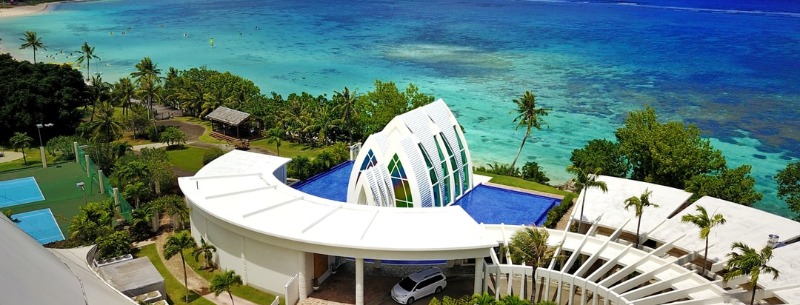Hagatna Visitors Guide
Once somewhat a Pacific theme park for tourists from Japan, Guam and its capital of Hagåtña is in the middle of a tourism overhaul. The result of the government’s drive to retool the island’s image is a resurgence in Chamorro culture with a growing focus on the local food and the intriguing stories that underlie many of the villages. The capital city has its own quaint village vibe in the middle of a Pacific tropical paradise filled with enchanting waterfalls, secluded swimming holes, white sand beaches, and protected bays.
The Chamorro people are indigenous to Guam, and their mix of Spanish, Asian and American cultures is integral to Hagåtña. Visitors can shop for authentic handicrafts at the Chamorro Village, built in the traditional style as an outlet for local farmers, merchants, and artisans. While at the markets, sample some of the island’s most delicious treats: chicken kelaguen, made with green onions, coconut, Boonie peppers, onions and lemon juice, octopus stewed in coconut milk, and escabeche, a freshly fried fish dish covered with soy sauce, vinegar and a delectable mix of local vegetables.
The heart of Hagåtña is the Plaza de España. The Spanish ruins and spacious grounds were home to the governor of the island from 1669 until the Second World War. Many of the original structures have survived, including the circular Chocolate House, where the Spanish custom of serving hot cocoa each afternoon was carried out. Built in the typical Spanish style, the Chocolate House is made of coral stones covered with smooth lime mortar. Inside are two Spanish coat-of-arms uncovered after the Governor’s Palace was destroyed in the Second World War. The plaza continues to be the center of many civic and government activities.
Next to the Plaza de España is the Dulce Nombre de Maria Agana Cathedral and Basilica. Erected in 1669, it is Guam’s oldest Catholic church. Pope John Paul II paid the site a visit, and a monument stands nearby to commemorate the occasion.
Behind the cathedral is the Latte Stone Park, filled with the popular icons of Guam’s culture. Built around 500 AD, the stones are believed to be pillars used to support elevated houses. Each latte is made of two stones. The haligi is the shaft stone that juts up from the ground, and the tasa is the capstone that creates a “T” shape. The park’s examples were imported from a remote village in the south, but the enduring stones are found in many of the island’s river valleys and coastal areas.
Built to protect the bay and city of Hagåtña, Fort Santa Agueda was built by the Spanish in 1800. Little of the original fort remains, but the platform provides spectacular views of the city and the Philippine Sea.
Although Guam is a territory of the United States, July 4 has little significance to most locals. Instead, they celebrate Liberation Day on July 21 to remember the day American troops liberated the country during the Second World War. The festive celebrations make July the best time to visit Guam. Throughout the month, many beaches erupt with carnivals complete with games, rides, food, and fireworks, and the entire island has a lively party atmosphere.
Hagatna Geographical Location
Hagåtña is located on the central western coast of Guam at the mouth of the Hagåtña River.
It is the island’s second smallest village having an area of only 1 square mile and a population of approximately 1,100.
Hagatna Language
English and Chamorro are the official languages of Guam with Filipino, Pacific Island, and Asian languages also popular.
Hagatna Predominant Religion
- 85% Roman Catholic
- 15% Other
There are many who practice indigenous beliefs in addition to Roman Catholicism.
Hagatna Currency
The official currency of Guam is the US Dollar.
Hagatna Climate
It is hot and humid in Hagåtña throughout the year. The dry season occurs from December until June while October and November are at the highest risk of typhoons.
Hagatna Main Attractions
- Chamorro Village
- Latte Stone Park
- Ritidian Point
- Guam Museum
- Fort Apugan
- South Pacific Memorial Park
